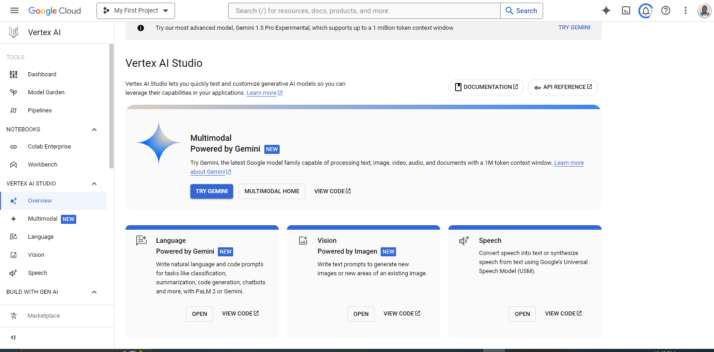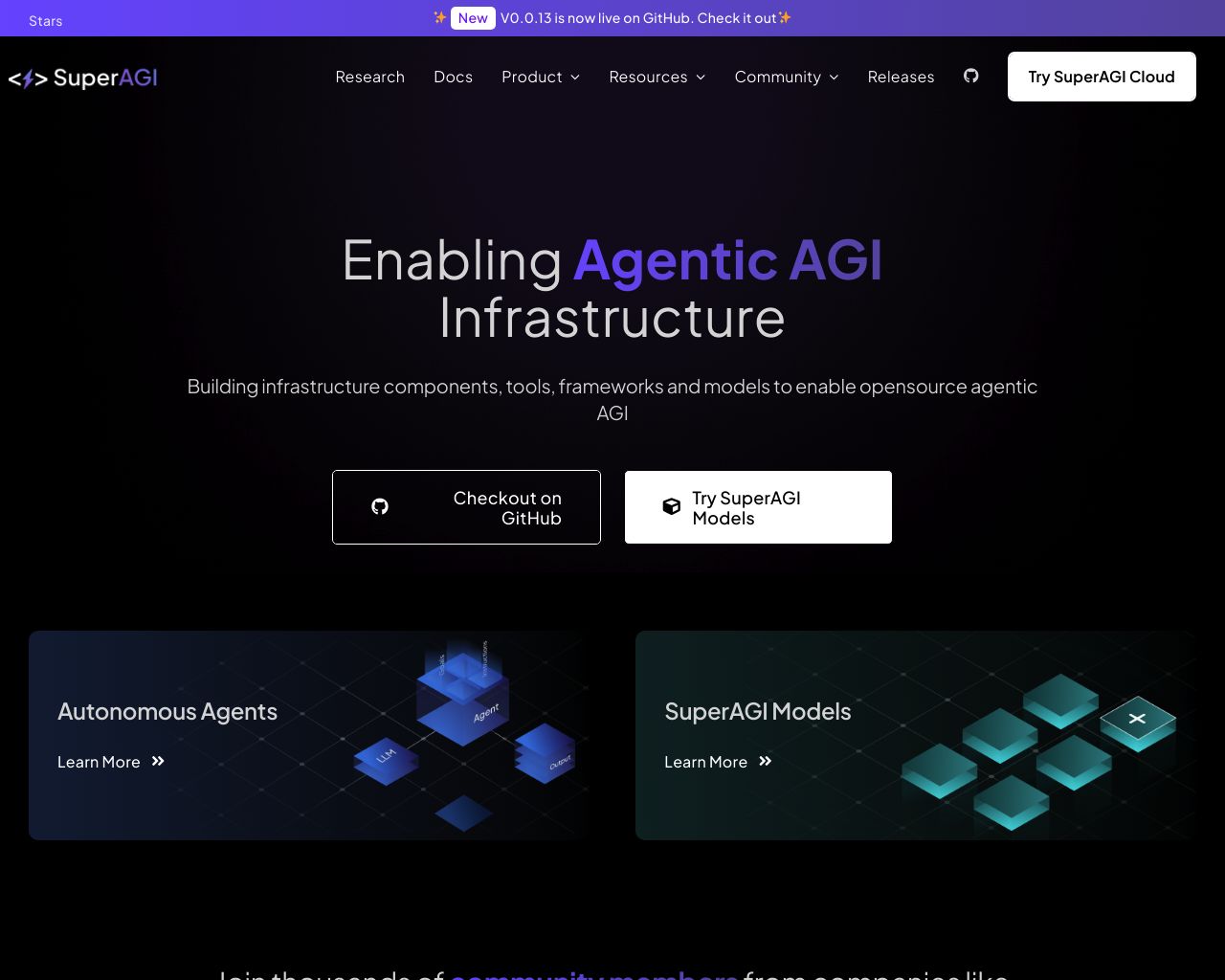Vertex AI vs. SuperAGI: Comparing Enterprise ML and Open-Source AI Platforms
AI development platforms are reshaping how businesses and developers harness machine learning capabilities. This comparison examines Vertex AI, Google’s enterprise-grade ML platform, and SuperAGI, an open-source autonomous agent framework. We’ll explore how these tools empower users to build, deploy, and manage AI solutions, highlighting their strengths in areas like model development, tool integration, and scalability. By analyzing key features, we’ll reveal how each platform caters to different needs in the AI ecosystem. Our review also introduces SmythOS, a versatile alternative that combines powerful AI capabilities with user-friendly design, offering unique advantages for businesses seeking efficient and accessible AI development solutions.
Vertex AI Overview
Vertex AI empowers developers to create, deploy, and manage sophisticated machine learning models and AI applications. This comprehensive platform integrates data engineering, data science, and ML engineering workflows, streamlining the entire AI development process.


Screenshot from Vertex AI studio.
Vertex AI’s standout feature, the Gemini model, processes multimodal inputs including text, images, audio, and video. This versatility enables developers to build advanced AI agents capable of complex reasoning, multiturn chat, and code generation. The platform’s Model Garden offers a diverse library of pre-trained models, allowing users to discover, test, and customize AI solutions efficiently.
Vertex AI’s standout feature, the Gemini model, processes multimodal inputs including text, images, audio, and video. This versatility enables developers to build advanced AI agents…
The platform excels in model management and MLOps, providing tools for version control, performance monitoring, and workflow orchestration. Its Feature Store service optimizes ML feature serving, enhancing model efficiency. Vertex AI also supports specialized models like Imagen for text-to-image generation and MedLM for healthcare applications, broadening its utility across industries.
While Vertex AI offers powerful capabilities, it requires coding knowledge for model development and deployment. This may present a barrier for non-technical users seeking no-code solutions. Additionally, the platform’s cost structure and learning curve could pose challenges for smaller organizations or individual developers with limited resources.
Vertex AI’s integration capabilities shine, supporting various APIs and enabling seamless connections with existing systems. The platform’s scalability and security features, including data encryption and OAuth support, make it suitable for enterprise-level deployments. By combining advanced AI models with robust management tools, Vertex AI aims to democratize AI development and foster innovation across diverse applications.
SuperAGI Overview
SuperAGI empowers developers to create, host, and manage open-source AI agents. The platform’s dev-first approach enables building autonomous systems that perform tasks efficiently and improve with each iteration.


SuperAGI distinguishes itself through extensive tool integration, supporting Slack, email, Google Search, GitHub, and more out-of-the-box. Its user-friendly graphical interface simplifies agent management, while concurrent execution boosts productivity. Docker-based installation streamlines setup, sidestepping common Python versioning issues.
SuperAGI distinguishes itself through extensive tool integration, supporting Slack, email, Google Search, GitHub, and more out-of-the-box.
The platform combines software guardrails for frameworks like Flask and Django with intelligent developer agents, facilitating complex real-world software system creation. SuperAGI prioritizes security and compliance, integrating seamlessly with developer tools such as Jira, GitHub, and Jenkins. It reimagines version control and issue tracking for autonomous software development.
SuperAGI’s research focuses on advancing autonomous software development and generalized AI. Key areas include neurosymbolic AI, multi-agent systems, novel model architectures, and recursive self-improvement systems. The company also explores AI’s socio-economic impacts, addressing digital workforce dynamics, algorithmic governance, and ethical AI considerations.
While SuperAGI offers powerful capabilities, its open-source nature may present challenges for users seeking enterprise-grade support or requiring extensive customization. The platform’s focus on developer-centric features could potentially limit accessibility for non-technical users looking for no-code solutions.
Feature Comparison
Vertex AI and SuperAGI offer contrasting approaches to AI development and deployment. Vertex AI provides a comprehensive platform for machine learning and AI model development, with robust enterprise features. SuperAGI focuses on open-source autonomous AI agents, catering more to developers and researchers.
Vertex AI excels in data management and MLOps, offering advanced tools for model versioning, performance monitoring, and workflow orchestration. Its Feature Store optimizes ML feature serving, enhancing model efficiency. SuperAGI, on the other hand, emphasizes agent autonomy and tool integration, supporting a wide range of out-of-the-box integrations like Slack, GitHub, and Google Search.
In terms of security, Vertex AI provides enterprise-grade features including data encryption, OAuth support, and IP control. SuperAGI’s open-source nature may require additional configuration for comparable security measures. Vertex AI’s scalability and integration with Google Cloud services make it well-suited for large-scale, production deployments, while SuperAGI’s focus on developer-centric features and research-oriented approach may appeal more to experimental projects and academic settings.
Feature Comparison Table
| Vertex AI | SuperAGI | SmythOS | |
|---|---|---|---|
| CORE FEATURES | |||
| Visual Builder | ✅ | ❌ | ✅ |
| No-Code Options | ❌ | ❌ | ✅ |
| Audit Logs for Analytics | ❌ | ✅ | ✅ |
| SECURITY | |||
| IP Control | ✅ | ❌ | ✅ |
| COMPONENTS | |||
| Huggingface AIs | ❌ | ✅ | ✅ |
| Zapier APIs | ❌ | ✅ | ✅ |
| Data Lakes | ✅ | ❌ | ✅ |
| DEPLOYMENT OPTIONS (EMBODIMENTS) | |||
| Staging Domains | ✅ | ❌ | ✅ |
| DATA LAKE SUPPORT | |||
| Sitemap Crawler | ❌ | ❌ | ✅ |
| YouTube Transcript Crawler | ❌ | ❌ | ✅ |
Best Alternative to Vertex AI and SuperAGI
SmythOS stands out as the superior alternative to Vertex AI and SuperAGI, offering a comprehensive platform for AI agent development and deployment. Our solution combines powerful features with user-friendly design, making advanced AI capabilities accessible to users across various skill levels.
Unlike Vertex AI’s complex enterprise focus or SuperAGI’s open-source developer-centric approach, SmythOS provides a versatile, no-code visual builder that dramatically simplifies AI agent creation. This intuitive interface enables users to design sophisticated workflows without extensive programming knowledge, democratizing AI development for businesses of all sizes.
SmythOS provides a versatile, no-code visual builder that dramatically simplifies AI agent creation… enabling users to design sophisticated workflows without extensive programming knowledge
SmythOS excels in its extensive integration ecosystem, supporting a wide array of APIs, AI models, and tools. This flexibility allows seamless incorporation into existing business processes, surpassing the more limited integrations of Vertex AI and SuperAGI. Our platform’s pre-built API integrations and templates significantly reduce setup time, allowing users to focus on innovation rather than technical implementation.
One of our key advantages is the support for multi-agent orchestration, enabling teams of AI agents to collaborate on complex tasks. This feature enhances efficiency and scalability, outperforming both Vertex AI and SuperAGI in handling intricate, multi-faceted projects. Additionally, SmythOS offers versatile deployment options, including API endpoints, webhooks, site chats, and scheduled agents, providing unparalleled flexibility in how AI solutions are implemented and utilized.
With SmythOS, we’ve prioritized security and scalability without compromising on usability. Our platform includes robust features like data encryption, OAuth support, and IP control, matching enterprise-grade security while maintaining an accessible user experience. This combination of advanced capabilities and ease of use makes SmythOS the ideal choice for businesses looking to harness the full potential of AI agents quickly and effectively.
Conclusion
Vertex AI and SuperAGI offer powerful AI development capabilities, each with distinct strengths. Vertex AI excels in enterprise-grade ML model development and deployment, providing robust tools for data management, MLOps, and scalability. Its integration with Google Cloud services makes it ideal for large-scale production environments. SuperAGI, with its focus on open-source autonomous AI agents, appeals to developers and researchers seeking flexibility and extensive tool integration.
However, SmythOS emerges as the superior choice, combining the best of both worlds with additional unique advantages. Our platform’s intuitive drag-and-drop interface democratizes AI development, making it accessible to both technical and non-technical users. We offer unparalleled versatility with support for over 300,000 integrations, allowing seamless connection to various APIs, AI models, and data sources.
SmythOS’s ’Create Once, Deploy Anywhere’ approach sets us apart, enabling users to build AI agents that can be easily deployed across multiple platforms and services. This flexibility, combined with our robust security features and scalability, makes SmythOS ideal for businesses of all sizes looking to harness the power of AI efficiently.
Ready to experience the future of AI development? Explore our diverse range of AI-powered agent templates to jumpstart your journey. For a deep dive into SmythOS’s capabilities, check out our comprehensive documentation. Take the first step towards transforming your workflow — create your free SmythOS account today and join the AI revolution!
Last updated:
Disclaimer: The information presented in this article is for general informational purposes only and is provided as is. While we strive to keep the content up-to-date and accurate, we make no representations or warranties of any kind, express or implied, about the completeness, accuracy, reliability, suitability, or availability of the information contained in this article.
Any reliance you place on such information is strictly at your own risk. We reserve the right to make additions, deletions, or modifications to the contents of this article at any time without prior notice.
In no event will we be liable for any loss or damage including without limitation, indirect or consequential loss or damage, or any loss or damage whatsoever arising from loss of data, profits, or any other loss not specified herein arising out of, or in connection with, the use of this article.
Despite our best efforts, this article may contain oversights, errors, or omissions. If you notice any inaccuracies or have concerns about the content, please report them through our content feedback form. Your input helps us maintain the quality and reliability of our information.
